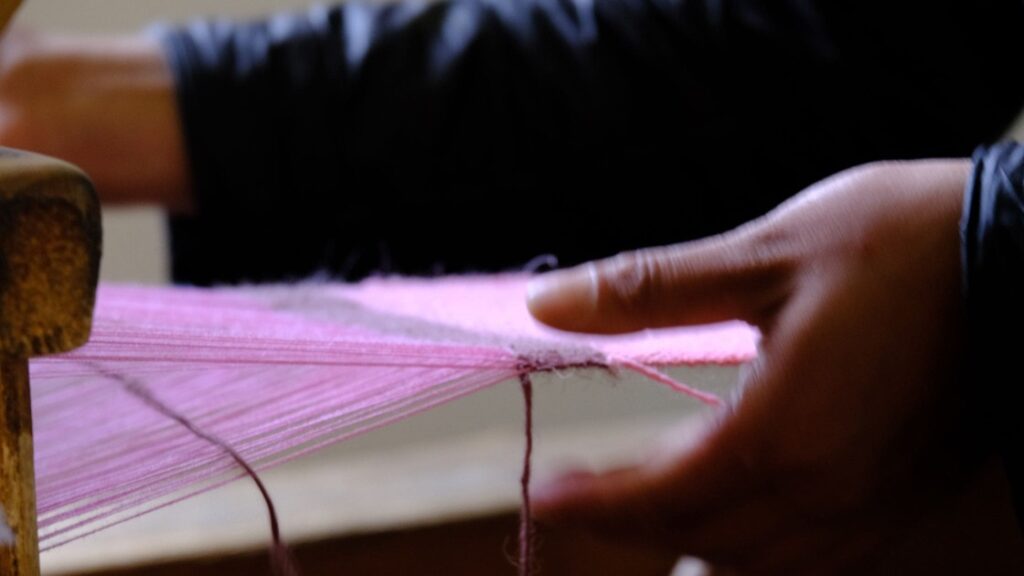+86-15889090408
[email protected]

The Khada, or white scarf, is a traditional Tibetan gift and symbol with profound cultural and spiritual significance. This simple yet elegant piece of fabric, usually made of silk or other fine materials, plays an essential role in Tibetan customs and ceremonies. In this blog post, we will explore the origins, symbolism, and uses of the Khada, shedding light on its importance in Tibetan culture.
The Khada has deep historical roots in Tibetan culture and is believed to have been used for centuries as a gesture of respect, honor, and goodwill. Its origins can be traced back to ancient Tibetan traditions and Buddhist practices, where it was used in rituals and ceremonies.
The white color of the Khada holds significant symbolic meaning. In Tibetan culture, white is associated with purity, peace, and auspiciousness. It is a color that signifies new beginnings, purity of intentions, and the clearing of obstacles. The Khada is often used in contexts that reflect these values, such as ceremonies and important life events.
One of the most common uses of the Khada is to honor and welcome guests. It is presented as a gesture of respect and hospitality upon arrival. The act of draping the Khada around the shoulders of a guest is a traditional Tibetan way of expressing warmth and reverence. This gesture is especially prevalent during formal occasions and ceremonies.

In Tibetan Buddhism, the Khada is an integral part of various religious rituals and ceremonies. It is often offered to deities, lamas, and spiritual leaders as a symbol of respect and devotion. The Khada is used in ceremonies such as initiations, blessings, and rituals to invoke auspiciousness and spiritual protection.
The Khada is also used to mark significant life events such as weddings, births, and anniversaries. It is presented to individuals as a token of good wishes and blessings. During these celebrations, the Khada is often draped around the shoulders of the individuals involved, signifying the community’s support and well-wishes.
In Tibetan funerals and memorial services, the Khada is used to honor the deceased and convey respect. It is placed on the deceased’s body or altar as a sign of reverence and to wish them a peaceful transition to the next life.
Khadas are traditionally made from silk or other fine fabrics, which symbolize the high regard in which the recipient is held. The silk used in Khadas is often of high quality, reflecting the importance of the gesture and the value of the occasion.
The Khada is typically a long, narrow strip of fabric, with a simple and elegant design. It is often plain white, though some variations may include subtle patterns or embroidered symbols. The simplicity of the Khada emphasizes its symbolic meaning rather than its material value.
The manner in which the Khada is presented is also significant. It is usually offered with both hands and with a respectful bow, demonstrating the sincerity and gravity of the gesture. The recipient may then drape the Khada over their shoulders or accept it with gratitude.

The tradition of using Khadas continues to be an important part of Tibetan culture, both within Tibet and among Tibetan communities worldwide. It serves as a link to cultural heritage and spiritual practices, bridging past and present.
While the Khada remains a traditional symbol, its use has adapted to modern contexts. It is often used in intercultural exchanges, diplomatic visits, and international events to symbolize goodwill and respect. The Khada has also become a popular item among tourists and collectors interested in Tibetan culture.
When purchasing a Khada or similar items, it is important to be mindful of ethical considerations, such as supporting authentic Tibetan artisans and respecting the cultural significance of the object. Ensuring that the purchase respects traditional practices and contributes positively to the local communities helps preserve the cultural heritage associated with the Khada.
The Khada, or white scarf, is a deeply symbolic and meaningful element of Tibetan culture. Its use in ceremonies, rituals, and everyday interactions reflects the values of respect, purity, and auspiciousness that are central to Tibetan traditions. Whether used to honor guests, celebrate significant life events, or express spiritual devotion, the Khada embodies the essence of Tibetan hospitality and reverence. Understanding and appreciating the significance of the Khada allows one to connect more deeply with Tibetan culture and its rich tapestry of customs and beliefs.